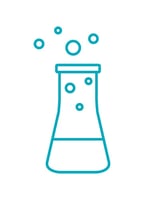Remember the last time a marketing campaign stuck to you? Then answer this simple question: Was it because the visuals were outstanding, or the product and its features so amazing that you still can remember them? Or was it the fact that the campaign somehow moved you from the inside? Out of these two, I can almost guarantee it was the latter. It might have been a great story where you really empathized with the characters or a campaign that resonated with a greater cause.

Curiosity
Studies indicate that an average westerner sees around 5000 ads or marketing messages a day. Even if the number wasn't quite as high as these studies suggest, it's definitely still a lot.
If you don't consciously try to absorb as much of the messages as you can, I bet you remember if only a couple of them at most when you're done with the day. It's getting progressively expensive to get your message across, so you should really focus on making your message stand out and creating an emotional impact to make it stick.
No one wants to look at advertisements anymore, and no one has to.
In a world of clutter and noise where everyone tries to outshout the next, the most impact can be gained by not shouting louder but by changing the perspective.
When talking about technology and experiences in the same sentence, it's quite evident that curiosity is a feeling you can quite effortlessly evoke. Just by creating an AR experience, you already have the upper hand, as most of us just can't resist trying something novel and different. Enticing experiences are the surefire way to overcome the first obstacle of a successful marketing campaign.
If stars align, the potential customer might just also promote your experience to their friends.

Empathy
Humans are empathetic creatures. We are hardwired to respond to empathy.
The power of XR is based on the fact that technology gives the user the ability to actually act upon and within the environment. It's not about passively experiencing but actively interacting with the content.
The most common ways to make the customer participate in your brand story, create a try-before-you-buy type of content or create a narrative where the customers are an active part of the story.
Even when a customer can identify this kind of participating as purely persuasive, it's still valid because it is appealing to their feelings and emotions. After all, even if we'd like to think of ourselves as "rational" shoppers, our purchase decisions are based on emotions.
The side-effect of immersive content is that the customer will remember it later on.
If I gave one example of a really successful empathy-arousing campaign, it would be the fundraising event organized by Charity: Water. Their immersive experience is an excellent example of new tech, making a real impact.
We follow Selam, a 13-year-old girl who travels for miles each day to get water. We learn that Selam has little time for schoolwork and that the water she drinks is dirty and infested with leeches. The experience immerses the viewer into her story and helps you see what she sees. When Charity: Water comes to install a well in her village, you can participate in the joy her family experiences.
Charity: Water showcased the experience at a fundraiser in Manhattan. In a single night, it raised $2.4 million.
With AR, you have the immersive potential ready and waiting in every one of your customers' pockets. With empathetic content, you can assure that your message moves your audience and even more importantly, your message will stick.

Reward
Brands and marketers want to narrow the gap between a display of ads and the purchase decision. It's not just about minimizing the buyer journey – it's also about making an emotional impact quickly and effectively. You only get a brief moment to persuade a potential customer to convert.
The opportunity of AR in marketing is its inherent ability to reframe the experience of reality and allowing the simplicity of emotions to work their magic.
Emotions are at the heart of a customer's decision-making process.
XR is not just a "niche" form of marketing anymore. As customers' expectations rise and their attention is harder and harder to get, it might actually be the only kind of marketing that works.
Take action
If you want to read more about what kind of content you should create with AR, please check this short article on what details to consider.
If you're anxious to get started with AR marketing, but would love a little guidance, our seasoned content creators and concept designers are always willing to help. Arilyn is an AR pioneer, so you can count on us to create an emotional AR campaign to get measurable results.


